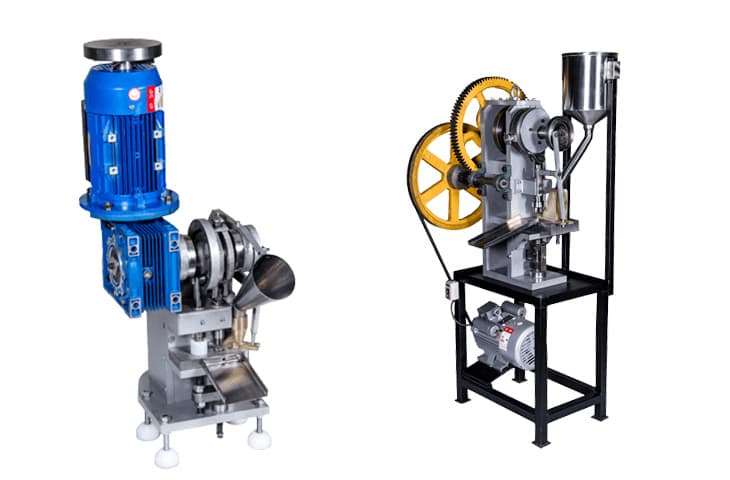A tablet press is a device that produces one of the most common forms of medicine by applying pressure to a powder or granule trapped in a mold.
Do you want to get in contact with Tablet press in Iran?
Get in contact with Tablet press suppliers in Iran now
Tablet press introduction
Different types of single-station tablet presses, hydraulic tablet presses, and rotary tablet presses have been developed based on the needs of various industries. If you want to know more about tablet presses and their' manufacturers and suppliers in the Iranian market read this article.
What is a single-pin press, and how does it work?
A single-pin tablet press is a relatively simple mechanical machine that is used to compress the powder into tablets of the same size, weight, and shape. This device is used to produce tablets with a variety of applications, from cosmetics and pharmaceuticals to detergents and industrial catalysts. Unlike rotary tablet presses used in large industries, single-pin tablet presses are used for lower volume production in smaller industries. Therefore, this device is recommended for manufacturers of detergents, supplements, and herbal medicines that are looking for a low-cost and highly flexible production method. For example, for the production of industrial catalysts, for the petrochemical industry, single-pin tablet presses are used.
How to work with a single pin press?
By using this type of tablet press, the tablet is produced by compressing the powder inside a mold by a punch or mandrel. The powder formula should be preprepared based on the intended application. In the pharmaceutical industry, a combination of powders such as active ingredients, inert additives, lubricants, and decomposers is used. This device usually runs at a speed of at least 3,000 tablets per hour. It is possible to increase the amount of production by increasing the number of mold cavities.
Components of a single-pin tablet press machine
Funnel or hopper: Holds powder or granular material before pressing operation. The powder material is transferred by the force of gravity from the funnel into the mold cavity.
Mold: which makes the pressed material take the desired shape. The bottom of the mold is formed by the lower mandrel and the upper mandrel is placed on the powder and pressed.
Lower and upper mandrels: The upper mandrel provides the force needed to stick the powder particles together and form a tablet. The lower mandrel acts as the bottom of the mold and also comes up after the pressing step and pulls the tablet out of the mold.
Crankshaft: A mechanical device that directs the movements of both up and down.
Tablet thickness adjuster nut: This piece controls the height of the powder entering the mold by adjusting the level of the lower mandrel.
Mold Blow Adjuster: Adjusts the lower mandrel, which rises at the end of each press step and is in line with the upper surface of the mold, which allows the tablet to be swept towards the collection tank.
Actuator wheel: Adjusts the movement of the mandrel up and down the hopper shoe.
The tablet pressing process is done in 5 steps
Fulling
Step 1: The crankshaft pulls the upper mandrel out of the mold and brings the lower mandrel to its lowest level inside the mold cavity. At this point, powder falls from the hopper into the mold and fills the hole created by the mold and the bottom mandrel.
Step 2: The lower mandrel is adjusted and raised according to the required amount of material, thus removing excess powder from the mold.
Compression
Step 3: The lower mandrel remains fixed, and the upper mandrel comes down and enters the mold, and presses the powder into tablets.
Pill exit
Step 4: The upper mandrel is pulled out, and at the same time, the lower mandrel moves upwards and lifts the pressed tablet. The tablet is removed by moving the hopper shoe off the mold.
Step 5: The above cycle is repeated to produce the next pills.
Benefits and Features of Single Pill Press
It is compact, light and durable, and simple in terms of operation.
Designed for pressing different types of powder and granules.
Ability to adjust machine parameters such as mandrel pressure, mold filling depth, and tablet thickness
Production of tablets with a physical appearance similar to tablets of rotary machines
It can be used for the production of tablets with different applications.


